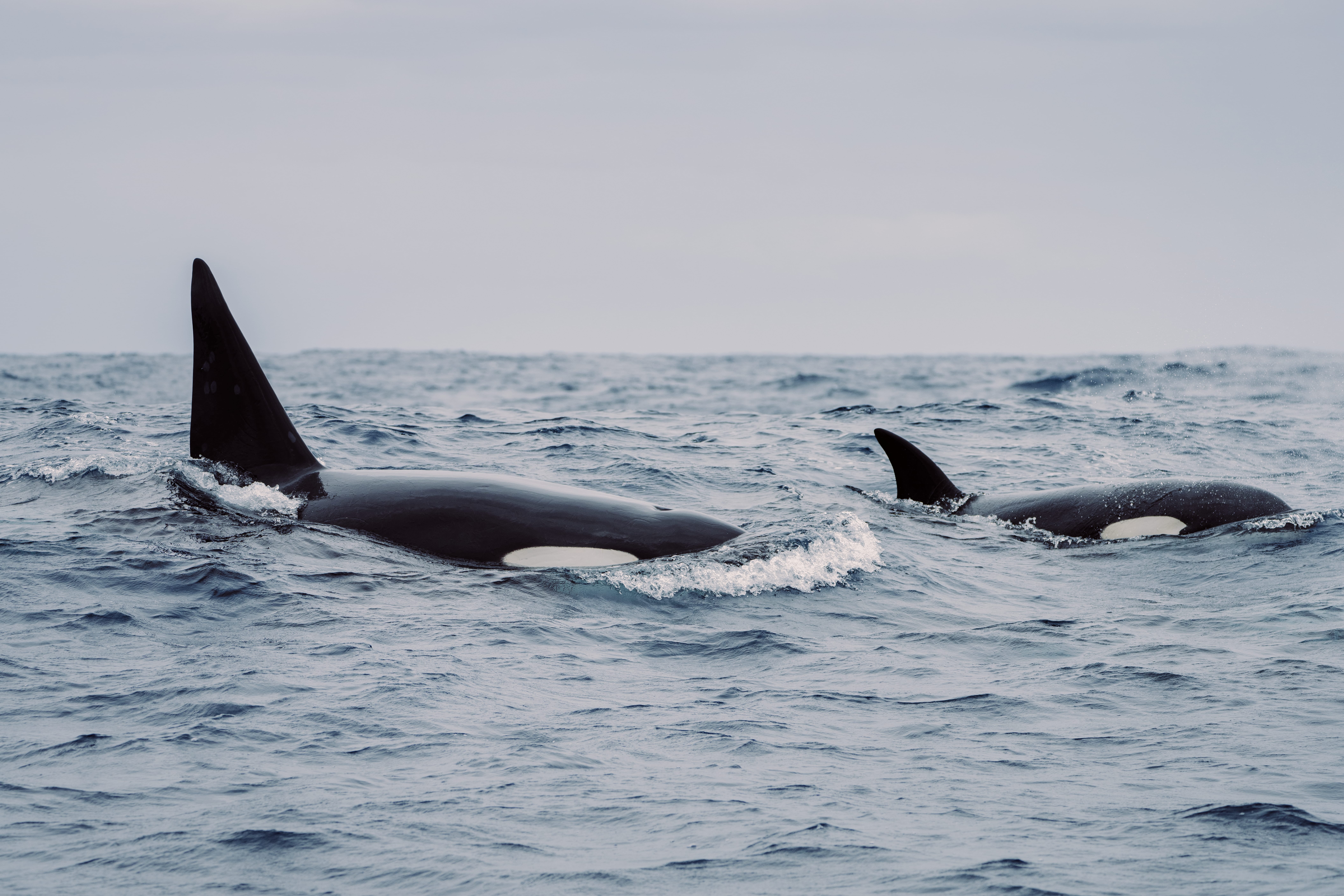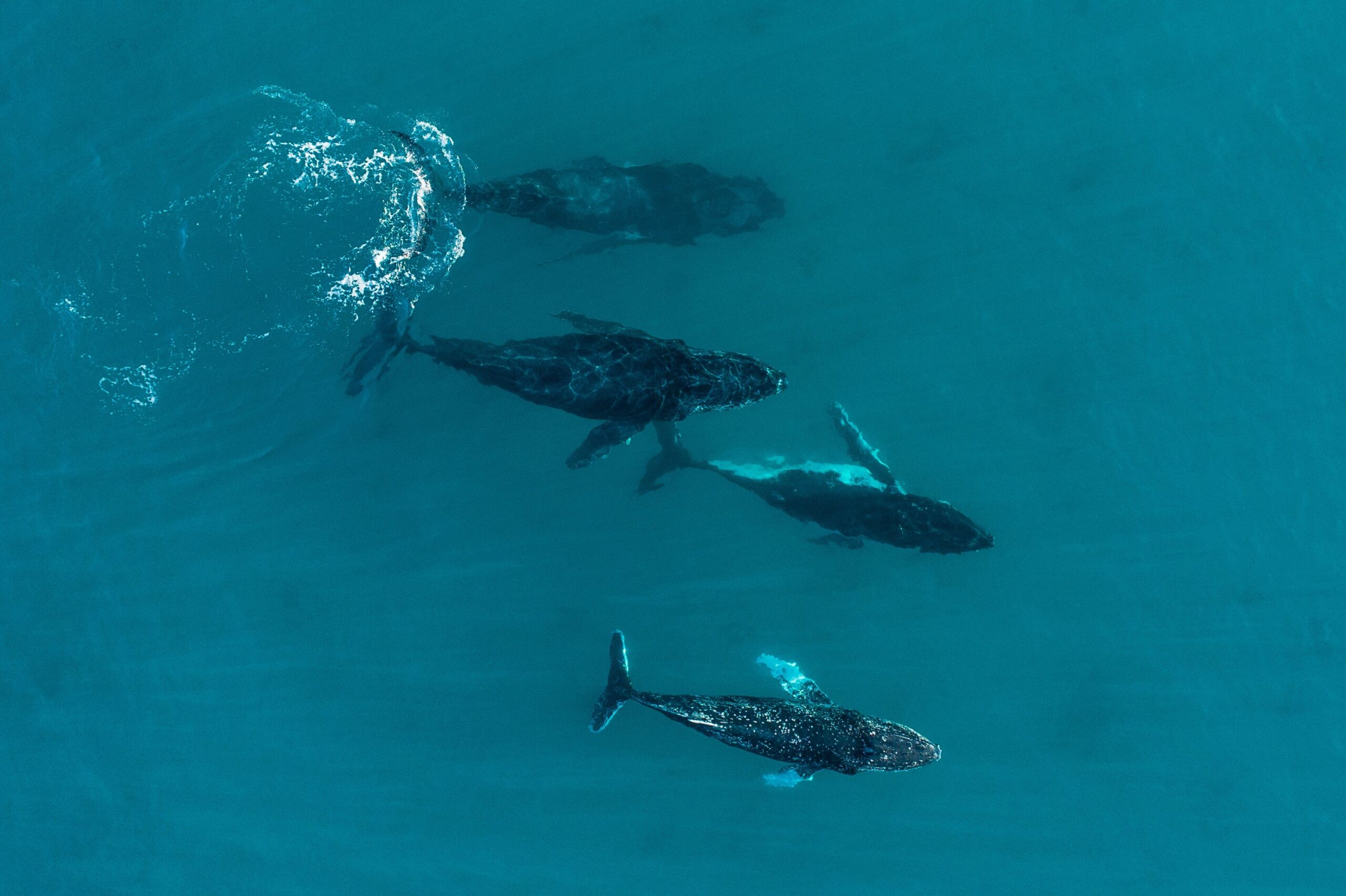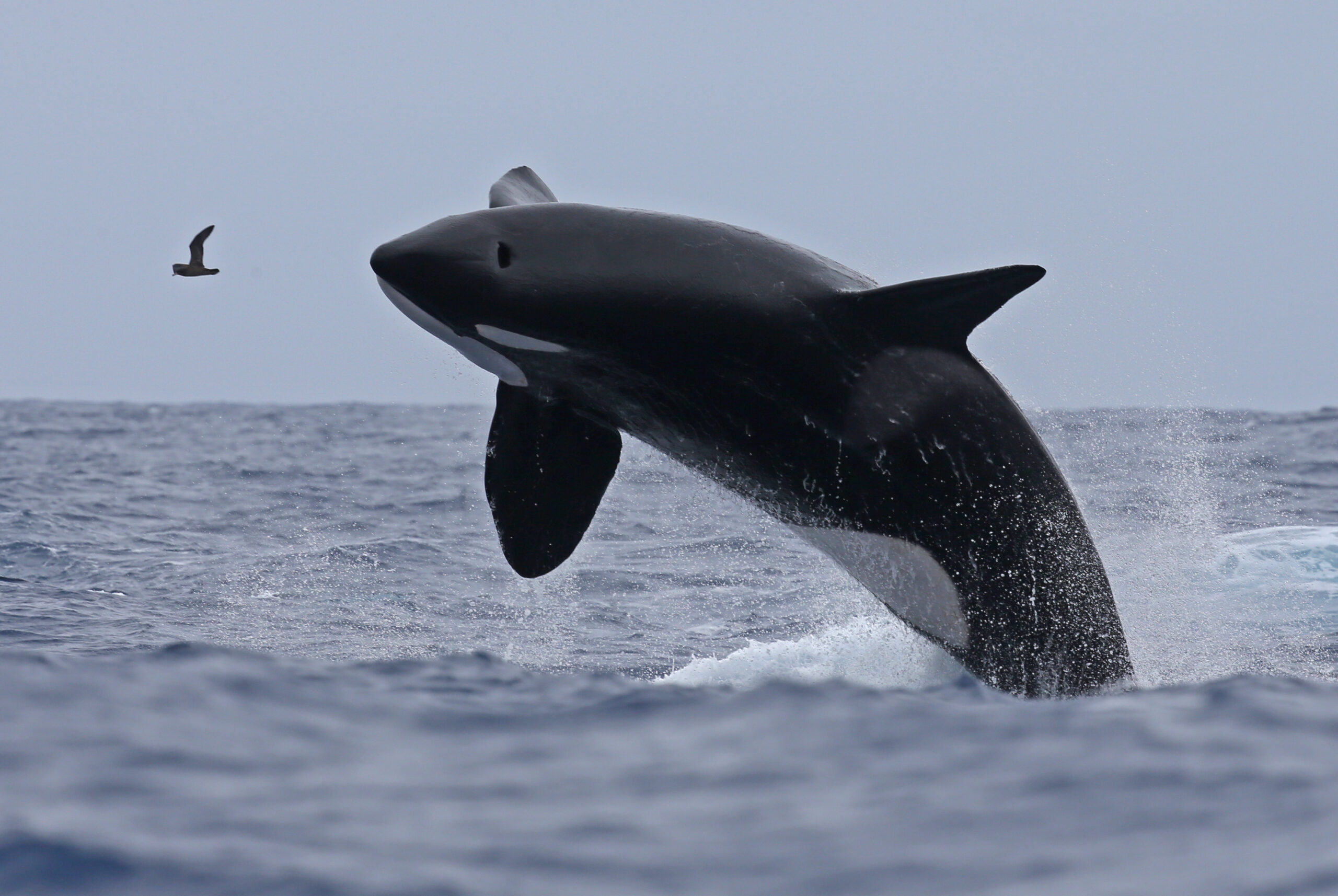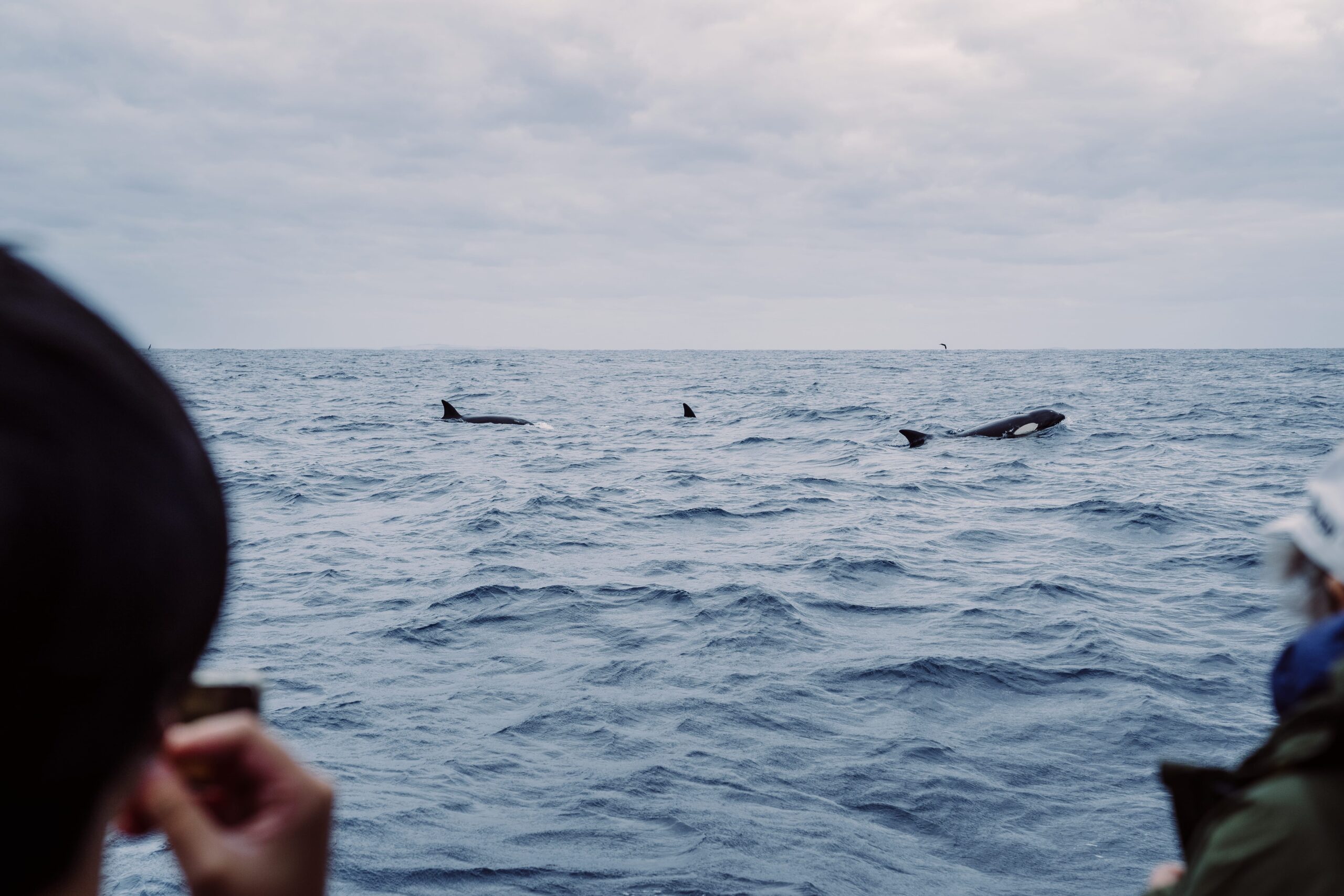Natural-born killers

This article is brought to you by Australian Wildlife Journeys.
Marine biologist Jennah Tucker has an infectious passion for whales – the result, she says, of a curious childhood spent steeped in the azure waters of Broome, north-west Western Australia.
Now all grown, Jennah, like the whales she studies, migrates south each year to the tiny town of Bremer Bay, on the state’s southern coastline. Here she plies the ocean, which bubbles with marine life attracted by dramatic submarine canyons, some reaching more than 4500m in depth.
“Seasonal upwellings, which occur in the Bremer and adjacent canyons, transport nutrients to the surface [0–200m depth],” Jennah says. “This supports the growth of phytoplankton, which in turn supports zooplankton and a diversity of pelagic species including sea birds, cetaceans, sharks, squid and fishes. This provides a dense and predictable occurrence of prey for our apex predators, the orcas, which seasonally aggregate in the area to feed, mate and socialise.”
Jennah is an integral member of the family-owned Naturaliste Charters team, which operates full-day killer whale expeditions between December and April.
“We see a whole host of different wildlife while we’re out there – killer whales, long-finned pilot whales, feeding on squid and fish,” says Naturaliste Charters owner, Paul Cross. “Only a few years ago we saw our first blue whale.”


Image credits: Tourism Australia; Naturaliste Charters
“One of the things that really blows me away about Bremer Bay is witnessing a beaked whale predation. Orcas need to eat 5 per cent of their body weight each day, and seeing them in full stealth mode, they’re listening, they can hear the whales coming through the canyon systems and then they’ll spread out, five or six animals in a row, 50–60m apart, picking up the acoustics and then the hunt is on. And then there’s all the birds, eyes in the sky, on top of the whale. It’s not for everyone, seeing a pod of killer whales hunt… but it is life, it’s how they survive.”
The business’s state-of-the-art 23m catamaran, Alison Maree, also travels west to Augusta and Cape Leewuin for the northern migration season (May–August) of 35,000 humpback whales.
“What’s unique is how close they come to the coast, 50–100m off land,” Paul says. “We’re also seeing increasing number of pygmy and blue whales – in groups of up to 10. We’re not aware that it happens anywhere else on the globe.”


Image credits: Naturaliste Charters
Bubbles, rosettes and poo
A huge part of Naturaliste’s charter is research, which is where Jennah comes into her own.
In March this year, for example, the team and guests witnessed a group of orcas partake in a peculiar predation event.
“We spent most of the day observing orcas from three different groups from a distance as they embarked on long dives, lasting up to 8 minutes at a time, which is consistent with foraging behaviour,” Jennah says. “We were only capturing short glimpses of the orcas while they took a few short breaths at the surface before disappearing on another long dive.”
And then, with a huge splash on the horizon, the mood changed. The orcas took off, surging for more than 6 nautical miles and climbing from a depth of about 800m to 80m.

Image credit: Tourism Australia
“They slowed and everything went quiet on the surface for a minute. We expected to see a beaked whale surface, because they’re the most common prey targets for this population of orcas. Instead, the large tail flukes of a sperm whale emerged, and we approached to find five sperm whales, including one juvenile and four adults. The group appeared distressed and exhausted. They were huddled in a tight group, frequently respirating and raising their heads from the water.
The orcas swam tight circles around the sperm whales, who in turn formed a circle, referred to as a ‘rosette’, with their heads facing inwards and their tails oriented outwards, toward the orcas. In addition to this ‘rosette’ formation, we observed a large dark cloud that rose to the surface of the water among the sperm whales. We initially thought it was blood but on closer inspection, it turned out to be faeces.
“Shortly after this, one of the orcas began tail slapping and the other orcas moved off from the sperm whales. The orcas remained in the area for some time but kept their distance from the sperm whales, who stayed tightly huddled at the surface for over an hour.”

Image credit: Tourism Australia
Jennah says she and the team searched the area for scraps of animal tissue or an oil slick, which are generally present in the aftermath of a successful mammal predation, but couldn’t find any signs that they had successfully hunted one of the sperm whales.
Whether this attack by the orcas on the sperm whales was an attempted predation or perhaps harassment behaviour related to prey stealing or some other driver is unknown. “There are a range of strategies sperm whales have been observed using when under perceived threat, the rosette formation being a known defensive technique. Defecation in sperm whales has previously been observed in association with behaviours indicative of distress, however it is not known whether, for example, this is a stress response or an offensive technique to deter threats, such as predators.”
One for the twitchers
The Bremer Canyon is also renowned for the amazing variety and abundance of sea birds, with large numbers of shearwaters, petrels, storm-petrels and albatrosses feeding across the canyon system and along the nearby shelf edge.
“Many of these seabirds are likely attracted by the rich fish and squid stocks in the area,” Jennah says. “Squid, in particular, form a large part of many albatross and petrel diets and are often caught at night by seabirds when the squid move upwards into the surface waters. These rich, clean and protected oceanic waters attract two-thirds of the world’s albatross species regularly, including the magnificent wandering albatrosses, along with the elegant light-mantled albatrosses, and the Amsterdam albatross, one of the rarest birds on the planet!”
It is these high-prey volumes that also attract the high diversity of cetaceans including beaked whales, which make up an important part of the orca’s diet. It’s during these impressive predation events that large oily slicks, rich in nutrients and whale flesh, form on the sea surface for the seabirds to scavenge. “Watching hundreds, sometimes thousands, of shearwaters and petrels and dozens of albatrosses feeding amongst the orca on the northern flanks of the Southern Ocean is surely one of the more amazing


Image credits: Naturaliste Charters
Naturaliste Charters’ 2024 pelagic birdwatching tours, led by four expert onboard birdwatching guides, depart from Augusta (two in July and two in August) and Bremer Bay (four in December).wildlife spectacles in Australia!”
“Our seabird excursions head straight out to the deeper waters of the Bremer Canyon in hopes of finding any seabird congregations from recent orca feeding events,” Jennah says. “And while we concentrate on spotting rarer seabirds and manoeuvre the boat so eager photographers can capture those classic albatross flight shots, we’re always on the lookout for nearby cetaceans including orcas, pilot whales and sperm whales.”
Image credit: Naturaliste Charters

Image credit: Tourism Australia
Common summer seabirds seen in large numbers include flesh-footed shearwaters, great-winged petrels and white-faced storm-petrels. These seabirds all breed on offshore islands along Australia’s southern coast, and the Bremer Canyon represents a critical feeding area for them. But the rich resources also attract wide-ranging seabirds from all points of the compass — yellow-nosed albatrosses from the southern limits of the Indian Ocean, shy albatrosses from Tasmania, black-browed albatrosses from New Zealand’s subantarctic islands, and even more sub-tropical species such as white-necked, Kermadec and Bulwer’s petrels from the warmer climes in the mid-Pacific and Indian oceans. Finally, the seabird jewel in the Bremer Canyon crown is the Barau’s petrel. “This is the only area in Australia to regularly attract this species all the way from Reunion Island, off Madagascar,” Jennah says.
Brimming with research
While guests are treated to extraordinary wildlife encounters on each voyage, Naturaliste Charters also contributes to scientific research and supports long-term conservation efforts.
Throughout the season it runs an internship program for early career marine scientists, as well as collecting photographic data that helps to identify individual orcas, their prey and other species of interest.


Image credits: Tourism Australia
“This has also allowed us to maintain an up-to-date catalogue which includes more than 150 individual orcas that have been recorded in the area to date and to improve our understanding of the group dynamics, social structure and size of this population,” Jennah says.
“Given the countless species and behaviours that we encounter on a daily basis in this remote and difficult-to-access environment, this data is also passed on to various researchers, institutions and organisations, both locally and internationally.”
When water speaks
“Over the years we’ve been able to answer a number of questions about the Bremer Canyon ecosystem, however, this has given rise to so many new questions,” Jennah says. “Probably one of the most significant involves the diet of not only the orcas but other species that aggregate in the area to hunt, including sperm whales and pilot whales.
“Given we only capture glimpses of a story as it unfolds on the surface, what happens below is speculative, meaning our days often end with a myriad of unanswered questions. While sometimes we are lucky enough to catch a glimpse of the prey species, more often we only see remnants like chunks of flesh, or oil and blood in the water. So, it seems like the natural next step to work towards gaining a better understanding of who’s eating what out there – this could better help us to understand the behaviours we are witnessing, and most importantly inform the conservation and management of these species.

Image credit: Tourism Australia
“All animals leave traces of their genetic material as they move through their environment, which can originate from skin and hair cells, mucous or faeces. This material is known as ‘environmental DNA’ (eDNA) and can tell us a lot about what is going on in a particular area. For example, water samples can be collected in the area of a predation event and processed to identify which species are present. These samples can be stored onboard and then sent off for analysis, making this a great non-invasive method that will complement our current observational data recording really nicely. It’s something that onboard passengers can also be a part of! While we still have some work ahead of us, applying for the relevant permits and developing protocols around this, we are very excited to kickstart this program and to learn more about this incredible marine ecosystem.”


Image credits: Naturaliste Charters; Tourism Australia
Naturaliste Charters is part of the Australian Wildlife Journeys collective. Find out more here.
This article is brought to you by Australian Wildlife Journeys.




